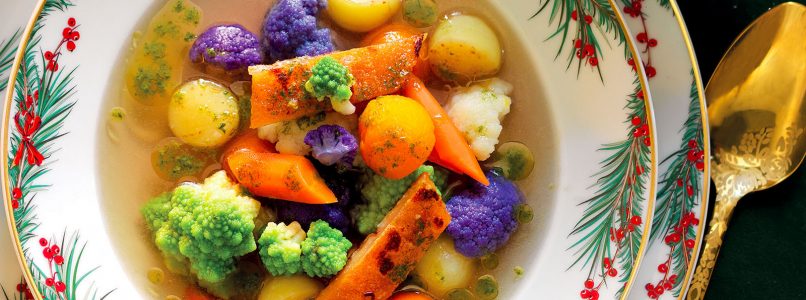Fresh vegetables, legumes rich in proteins and a scent of basil: impossible to resist the Genoese minestrone
Genoese minestrone it is a dish that comes from the meeting of many fresh vegetables and legumes with the typical Ligurian basil-flavored sauce, in this case prepared without pine nuts. The pesto is in fact used to savoring it on a steaming plate of spaghetti or trofie and instead in this recipe it is added to a soup that brings together the best of seasonal vegetables. The most suitable period to prepare it is in fact the spring, when there are many types of vegetables available.
The history of Genoese minestrone
It may seem strange that a region like Liguria, facing the sea, has many dishes in its traditional cuisine vegetables just like minestrone. This peculiarity can be explained by the fact that for many years the coasts of the region have been plagued by raids by Saracen pirates. This prompted the inhabitants to cultivate the land to obtain that sustenance which was so difficult to obtain because of the sea. The mild climate then facilitated the cultivation of vegetable gardens, from which the inhabitants were able to obtain the many vegetables with which they prepared multiple recipes.
The pasta suitable for Genoese minestrone
You can choose different types of pasta for the Genoese minestrone. Perfect the briquettes, a format similar to broken spaghetti, fingering, or trenette into small pieces. In fact, for this recipe all short pasta or long hand-broken shapes are suitable. Egg pasta, which would not be able to maintain the right consistency in cooking, is not suitable.
Here is the recipe of Genoese minestrone
Ingredients
1 carrot, 1 celery stalk, 2 potatoes, 200 g borlotti beans, 200 g green beans, 2 zucchini, 2 tomatoes, 100 g borage, 1/2 cabbage, 200 g chard, 300 g briquette-like pasta (broken spaghetti), 1 onion, 1 clove of garlic, 100 g pecorino cheese, extra virgin olive oil, salt, 2 tablespoons pesto without pine nuts, a few leaves of fresh basil.
Method
Peel the potatoes and chop them, clean the carrots and slice them, as well as zucchini, tomatoes, cabbage, borage, celery, chard and green beans. Rinse the beans that you have soaked since the night before, peel the onion and slice it, peel the garlic clove. In a saucepan, put the onions, garlic and a drizzle of oil. Brown everything and when the onion is golden brown add all the other vegetables and beans. Put a lot of water covering the vegetables and cook for about 2 hours on a low heat. If necessary, add water. Once the vegetables are cooked and salted, add the pasta. Cook until cooked and then turn off. Add the two spoons of pesto, the pecorino and bring to the table with a few fresh basil leaves. The minestrone is also perfect lukewarm, or served later.
Some more advice
For an even better Genoese minestrone, add a parmesan crust together with the vegetables: during cooking it will release a richer flavor and then eaten in chunks will be delicious. If you like a greater consistency, mash the potatoes with a fork once they are cooked: in this way the minestrone will be denser.


